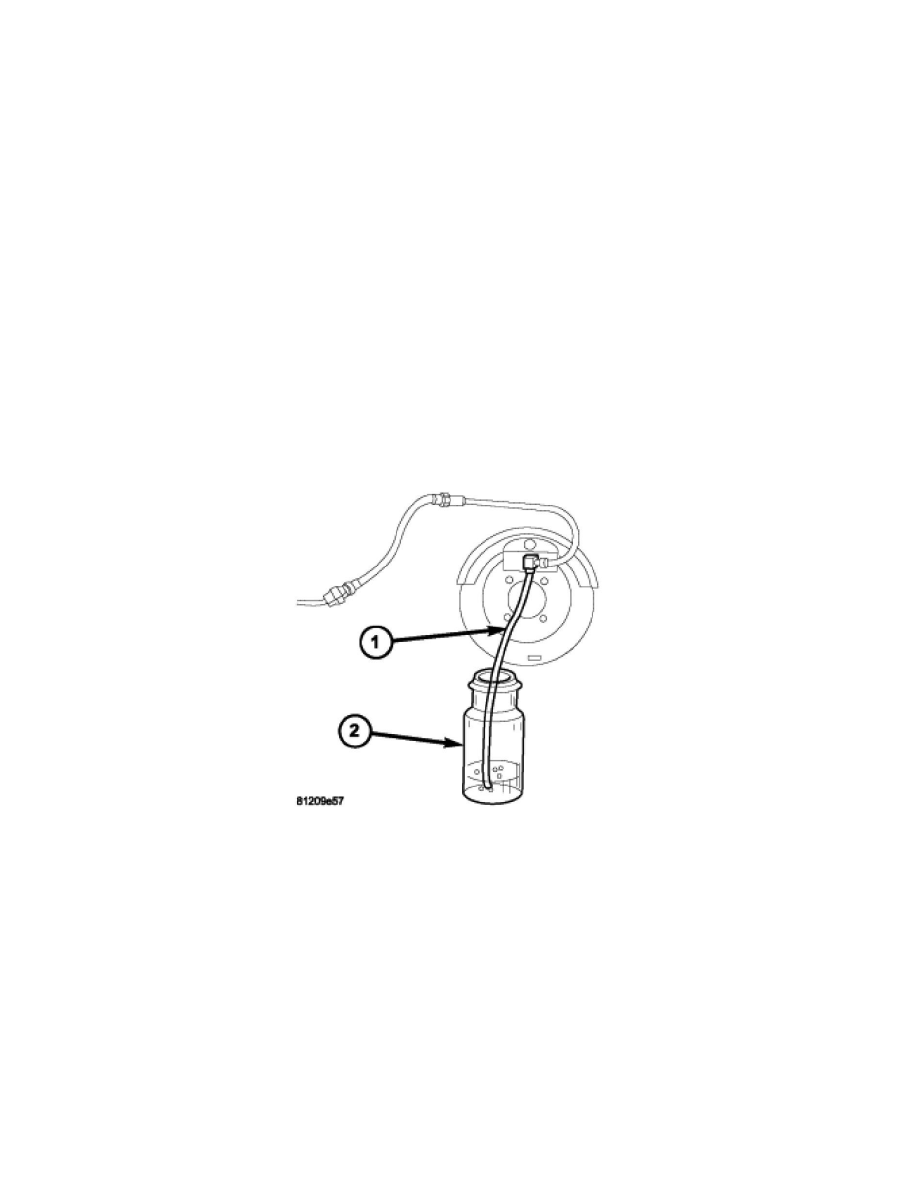Avenger V6-2.7L (2008)

Brake Bleeding: Service and Repair
Antilock Brake System Bleeding
ANTILOCK BRAKE SYSTEM BLEEDING
The base brake's hydraulic system must be bled anytime air enters the hydraulic system. The ABS must always be bled anytime it is suspected that the
HCU has ingested air.
Brake systems with ABS must be bled as two independent braking systems. The non-ABS portion of the brake system with ABS is to be bled the same as
any non-ABS system.
The ABS portion of the brake system must be bled separately. Use the following procedure to properly bleed the brake hydraulic system including the
ABS.
NOTE: During the brake bleeding procedure, be sure the brake fluid level remains close to the FULL level in the master cylinder fluid
reservoir. Check the fluid level periodically during the bleeding procedure and add Mopar(R) DOT 3 brake fluid as required.
BLEEDING
When bleeding the ABS system, the following bleeding sequence must be followed to insure complete and adequate bleeding.
1. Make sure all hydraulic fluid lines are installed and properly torqued.
2. Connect the scan tool to the diagnostics connector. The diagnostic connector is located under the lower steering column cover to the left of the
steering column.
3. Using the scan tool, check to make sure the ABM does not have any fault codes stored. If it does, clear them.
WARNING: When bleeding the brake system wear safety glasses. A clear bleed tube (1) must be attached to the bleeder screws and submerged
in a clear container filled part way with clean brake fluid (2). Direct the flow of brake fluid away from yourself and the painted surfaces of the
vehicle. Brake fluid at high pressure may come out of the bleeder screws when opened.
NOTE: Pressure bleeding is recommended to bleed the base brake system to ensure all air is removed from system. Manual bleeding may also
be used, but additional time is needed to remove all air from system.
4. Bleed the base brake system.
5. Using the scan tool, select ECU VIEW, followed by ABS MISCELLANEOUS FUNCTIONS to access bleeding. Follow the instructions
displayed. When finished, disconnect the scan tool and proceed.
6. Bleed the base brake system a second time. Check brake fluid level in the reservoir periodically to prevent emptying, causing air to enter the
hydraulic system.
7. Fill the master cylinder fluid reservoir to the FULL level.
8. Test drive the vehicle to be sure the brakes are operating correctly and that the brake pedal does not feel spongy.
